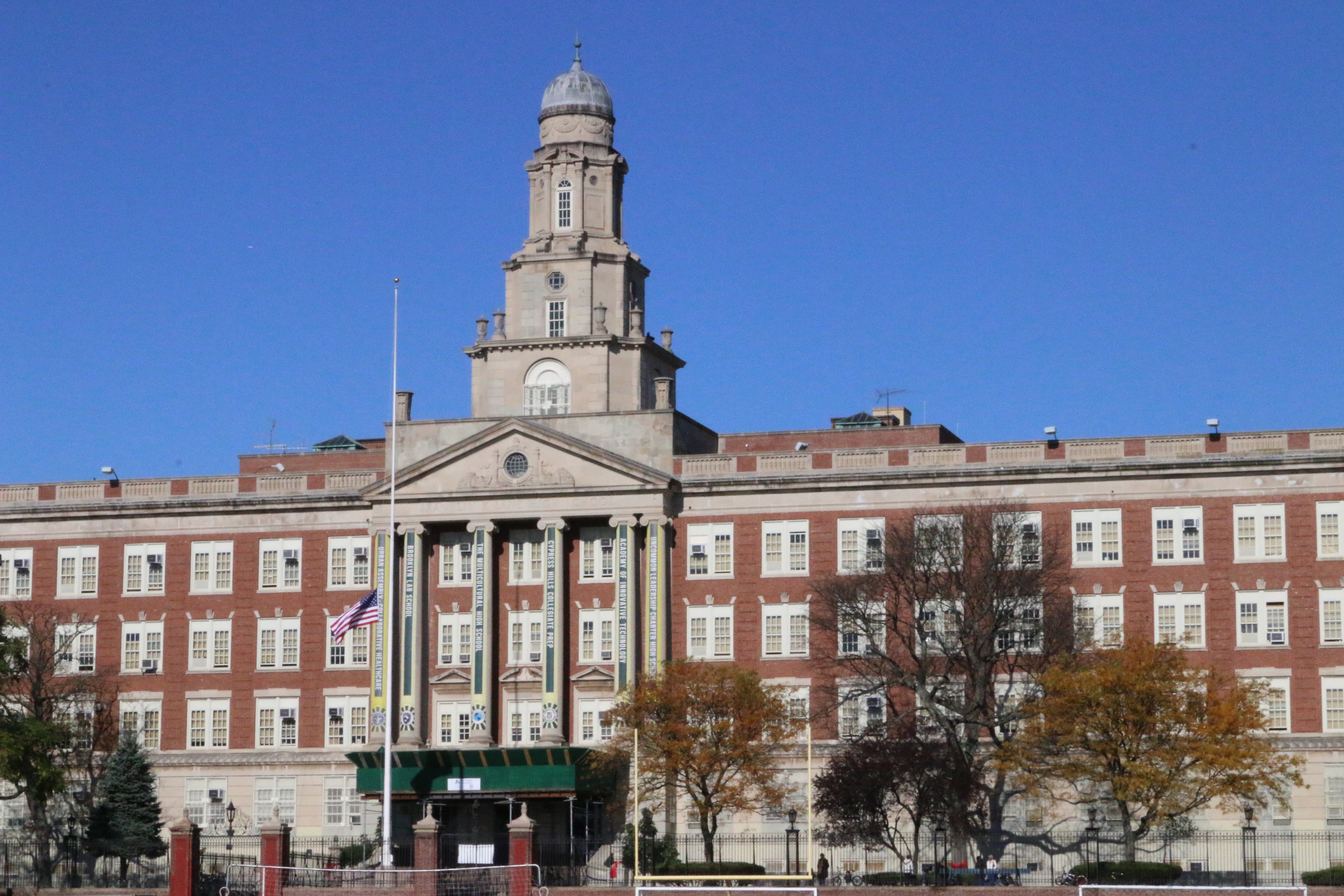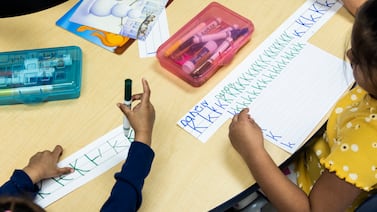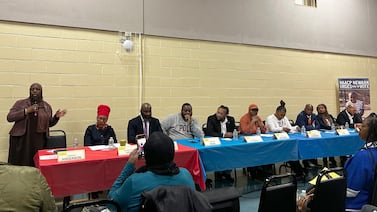Even as the city plans to dramatically increase the number of community schools by 2022, a change in how it funds the program is causing a mix of joy and frustration among its existing schools. Some nonprofits that have been providing extra services for students are getting a financial boost ahead of next school year, while others are seeing painful cuts.
The changes have so far affected most of the 145 campuses, which cover 165 schools, where organizations applied to oversee extra services, since their contracts expire this month. Ninety-three of those will see more money and 52 will see less.
Community schools, which embed social services directly in high-need schools by partnering with outside organizations, have been a central part of Mayor Bill de Blasio’s school improvement philosophy. Research suggests that the schools have improved attendance, graduation rates, math scores, and the rate at which students move to the next grade. Now, the education department has changed how it funds the program to create a more consistent formula for all of the schools, taking into account enrollment, the percentage of low-income students and how many grades are at the school.
The result is that nearly two thirds of the sites whose new contracts start July 1 received a bump in funding that will allow them to expand mental health and academic support for their students. But more than a third face cuts, and will need to lay off staff and pare down services they’ve offered for years just as many students are returning to buildings for the first time since March 2020.
Bushwick Leaders High School will get $280,000 in new funding, which will result in more social workers at the school, as well as more staff that can counsel and mentor students one-on-one, according to officials with Good Shepherd, the organization that runs services there. In contrast, Long Island City High School will see more than $425,000 in cuts, said Anju J. Rupchandani, executive director of Zone 126, the organization that has provided a suite of services at the school for the past decade. They plan to lay off three to four staff members who focus on improving chronic absenteeism, conduct home visits, mentor students, and work on college and career readiness both during and after the school day.
“I get it — we need to support any and all of our children — but when we are coming out of a pandemic it feels especially hard to swallow, considering many of our youth were living in East Elmhurst, Corona, and many of them lost family members and many of them had to go out and be the breadwinners for our households,” said Rupchandani.
Funding change sows confusion
The change in how community schools are funded comes ahead of a planned expansion of the program, which will bring the total number of schools from 266 to 406 by fall 2022. The expansion, which will be paid for with federal COVID relief dollars, is meant to target communities that were hardest hit by the pandemic, officials said.
Nathaniel Styer, a spokesperson for the education department, defended the new funding formula as a more “equitable” way to distribute dollars, but said that they are working “toward a solution” for schools experiencing cuts. He declined to say whether the department is considering giving those schools more money.
“We are reviewing the smaller number of organizations that saw budget decreases as a result of our improved, equitable and consistent funding formula, and will be working closely with them to best support schools and students,” Styer said.
Previously, about half of community schools were funded through the weighted formula, while the other half received a patchwork of city and state grants that the city distributed, officials said. Now all community schools are funded through the same formula, which starts with a base of $250,000 and then adds money based on a few weighted factors, such as the percentage of low-income students and total students.
Many of the organizations that work in the community schools had lobbied the city to find a more equitable funding structure, in part to boost funding for schools that were receiving $100,000 or less and found it difficult to provide extra support to their students, said Annie Minguez, director of government and community relations for Good Shepherd Services and also a member of the Coalition for Community Schools Excellence. Minguez noted that of the 266 community schools, there are 73 that are funded by the state and at generally lower levels than other sites.
But now mixed emotions have spread among the schools and community organizations who were notified of funding increases, cuts, or termination of their contracts. While Minguez said many schools are happy about funding increases, there wasn’t enough communication about what the new funding formula would look like, and schools received the news just 19 days before the new, three-year contracts would go into effect on July 1. Her organization saw funding increases, cuts, and lost contracts at schools it partners with.
Organizations are now making quick decisions about how their services for students will change — whether that means they’ll be expanded or cut — or how they will hand off the baton to another organization that beat them out for a contract at a given school.
Minguez said organizations that did not win new contracts need longer than June 30 to transition out of schools. They want the education department to cover additional costs that come out of that transition process.
“We have to sit with what happened here — that providers are struggling with being notified three weeks before the contract ends, or that they didn’t get the contract and they have to close a program and lay people off,” Minguez said.
Services boosted at some schools, while others cut back
Education officials said the department held planning sessions and met with advocacy groups and community organizations, to “make it clear that there would be re-leveling of funding.” The range of funding that an organization could receive also was outlined in the request for proposals, or RFP, that groups filled out to either renew their contracts with schools or apply to become new providers, officials said.
That RFP said schools could get a maximum of $785,000. In the end, however, that turned out to be $237,000 less than the highest award offered to any of the nonprofits. (A department official said the RFP simply provides a potential range for funding.)
That came as a surprise to the program at three high schools on the Franklin K. Lane campus in Cypress Hills.
School officials at the shared campus were expecting less than the annual $1.1 million they’ve received the past three years. They were planning ways to pare down services or make up funding gaps, but were surprised to learn earlier this month of the steep $591,000 cut for next year. As a result, the organization is laying off four social workers and slashing a variety of mental health services, said Emily Van Ingen, deputy director of Cypress Hills Local Development Corporation, which runs the program for nearly 1,000 students.
“We are coming out of this pandemic that has rocked the Cypress Hills-East New York community,” Van Ingen said. “Here we are, poised to come back in September, and we are losing a huge number of resources that would have been critical to bringing students back.”
Social workers provided one-on-one sessions with students and check-ins with families to connect them with housing or food assistance. They also teamed up with the school’s guidance counselors, and taught a social-emotional curriculum to students, Van Ingen said. The organization also employs “engagement specialists,” who work with families and students to make sure students are showing up to class or finding out why they were absent.
Two of the three schools will no longer have a full-time social worker through Cypress Hills, but Van Ingen said those schools have received new dollars from the education department to hire a full-time social worker on their own. Still, she’s concerned that it will take time to hire those staffers and get them up to speed with the school community’s needs as students return with compounded mental health and academic needs after two disrupted school years.
The four full-time remaining staffers across the three schools will focus on ensuring students are showing up to class. They also typically help pay for extended learning time, but Van Ingen isn’t sure yet how they will pull it off with less money.
In contrast, Bushwick Leaders High School is set to receive about $450,000 — roughly $280,000 more than they received each of the past three years. On top of their hiring plans for a new social worker and advocate counselor, who works one-on-one with students through counseling and check-ins, they will also be able to keep their restorative justice coordinator, whose salary was funded by a state grant that was set to expire this year, said Adam Bartholomew, the school’s community school director.
Bartholomew and Dana Spada, division director for Good Shepherd, said they’ve been stretched for years in providing extra academic and social emotional support for the school’s 340 students, nearly all of whom are from low-income families. They said the funding boost is a game changer.
“We’ve still been pulling off the work, but with such a skinny staffing structure,” Spada said. “We don’t really have what we need to do it, and finally we’ll really have the means.”
Rupchandani, whose organization is partnered with Long Island City High School, said it was necessary to increase support for schools that have historically had low levels of community schools funding. But she was frustrated there were any cuts at all, even as the mayor and Chancellor Meisha Porter have touted billions of dollars in federal stimulus funding for schools.
“They are robbing Peter to pay Paul,” Rupchandani said.





